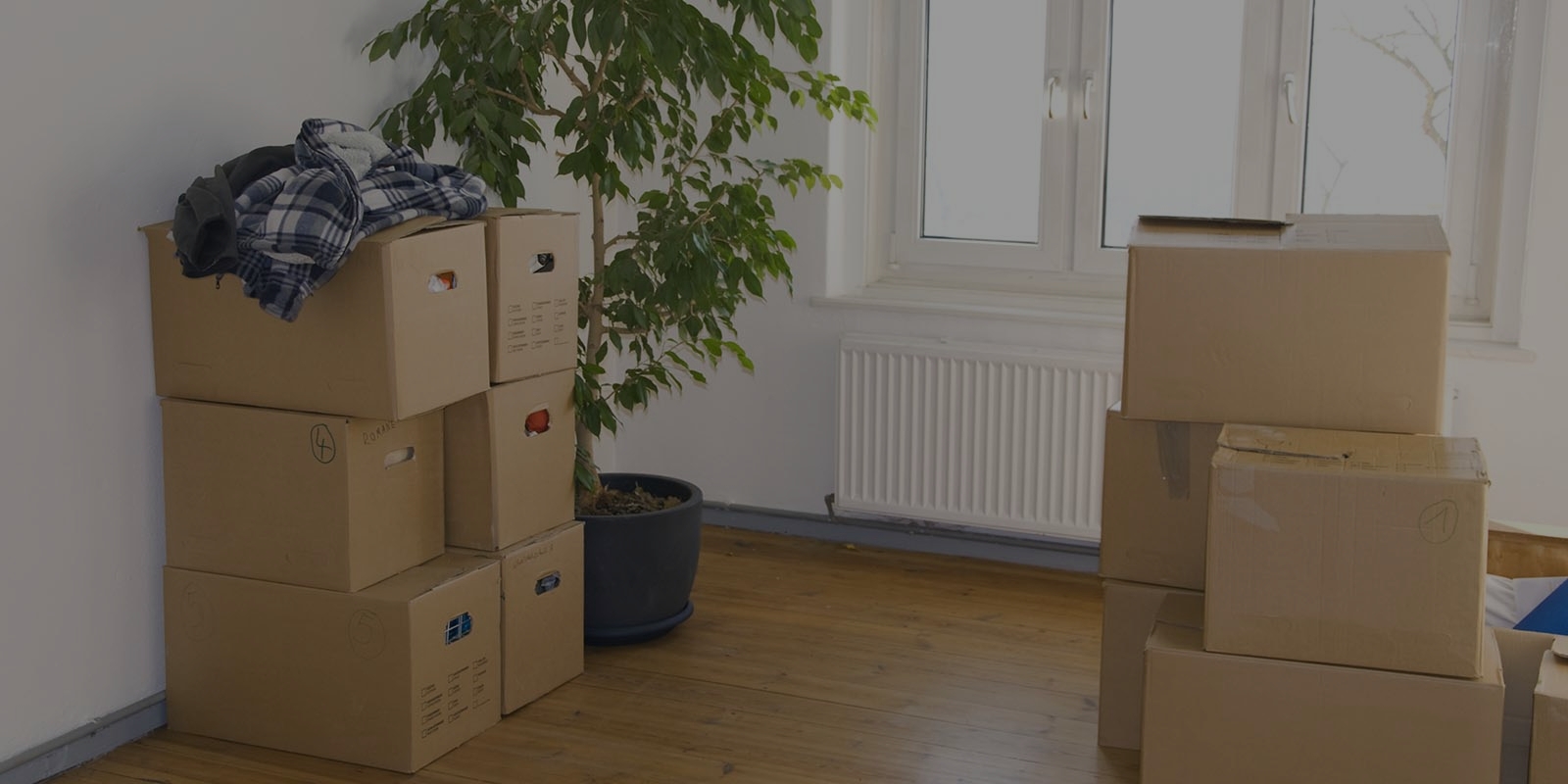A Guide to Foolproof Packing When Moving House
Posted on 03/06/2025
A Guide to Foolproof Packing When Moving House
Moving can be a stressful and overwhelming experience. But with the right packing strategy, you can make the process of moving house much smoother and stress-free. Whether you're moving across town or across the country, mastering the art of foolproof packing will save you time, money, and a great deal of frustration. In this comprehensive guide, you'll find actionable tips, expert advice, and a step-by-step approach to make your house move seamless from start to finish.
Why Foolproof Packing Matters When Moving House
Packing efficiently for a house move isn't just about throwing belongings into boxes. It's about protecting your valuable items, staying organized, minimizing waste, and making the unpacking process at your new home a breeze.
- Reduce Stress: Organized packing means fewer last-minute headaches.
- Save Money: Avoid replacing damaged or lost items.
- Save Time: Efficient packing simplifies both the move and unpacking process.
By following expert packing practices, you ensure your possessions arrive intact, and you'll feel more in control throughout your move.

The Ultimate Foolproof Packing Checklist for Moving House
Stay on track with an actionable packing checklist:
- Declutter and Organize
- Gather Quality Packing Supplies
- Pack By Room, Not by Random Items
- Label Everything Clearly
- Pack a Moving Essentials Box
- Secure Your Valuables
- Prepare Large Appliances and Furniture
Let's break these crucial steps down for a truly foolproof approach to packing for your house move.
1. Declutter Before You Pack
Moving home is the perfect opportunity to declutter and streamline your belongings. The less you move, the easier and cheaper your move will be. Foolproof packing starts with only packing what you want and need in your new home.
How to Declutter Effectively
- Start Early: Begin decluttering several weeks before moving day.
- Sort by Category: Go through clothes, books, kitchenware, etc., one category at a time.
- Donate, Sell, or Recycle: Give unwanted items a second life or dispose of them responsibly.
- Be Ruthless: If you haven't used something in a year, it's likely time to let it go.
Decluttering before packing will save you time, boxes, and moving costs!
2. Gather Quality Packing Supplies
Invest in strong, durable moving supplies. Don't skimp on the quality--damaged boxes lead to damaged belongings. Here's what you'll need for a foolproof packing experience:
- Sturdy Cardboard Boxes: Various sizes for different items
- Bubble Wrap and Packing Paper: For fragile items
- Heavy Duty Packing Tape: Secure boxes against bursts
- Permanent Markers: To clearly label every box
- Ziplock Bags: For small hardware and parts
- Stretch Wrap: To bundle and protect furniture
- Furniture Blankets: To shield from knocks and scratches
Reusing boxes? Ensure they're clean, dry, and sturdy enough for the journey ahead.
3. Pack Room by Room - Not by Random Item
One of the most foolproof packing strategies is to pack one room at a time. This keeps similar items together, simplifies labeling, and makes unpacking in your new home a breeze.
Packing Tips by Room
- Kitchen: Pack plates vertically, wrap knives securely, and use dish towels as padding.
- Bedrooms: Keep clothes in drawers or wardrobe boxes, disassemble beds last.
- Living Room: Wrap electronics in original packaging if possible. Secure cords with zip ties.
- Bathrooms: Use cling film over open toiletries to prevent leaks.
- Garage/Shed: Dispose of hazardous materials safely. Bundle and label tools.
Tip: Pack a suitcase for each family member as if you're taking a short vacation. Include clothes, basic toiletries, and essentials for a couple of days.
4. Label Every Box, Every Time
Effective labeling is the key to keeping your move organized. As part of your foolproof packing plan for moving house, write:
- Contents of the box (e.g., "Kitchen - Pots & Pans")
- Destination room in your new home
- Special instructions (such as "Heavy", "Fragile", or "Open First")
Color coding your boxes by room with colored markers or tape can simplify things even further. Take it a step further by keeping a master inventory list or using a moving app to track all boxes as they are loaded and unloaded.
5. Pack a Moving Essentials Box (or Bag)
Think of your Moving Day Essentials Box as your survival kit for the first 24-48 hours in your new house. This packing hack ensures you're never left frantically searching for urgent items. Include:
- Important documents (passports, contracts, address book)
- Phone chargers and basic electronics
- Toiletries and a change of clothes
- Medications and first aid kit
- Kid or pet supplies
- Snacks, water, and basic kitchenware
- Bedding and towels
Keep this box with you or clearly mark it for quick access. Make your first night stress-free!
6. Secure Your Valuables and Fragile Items
Your most important and breakable belongings require special care for foolproof packing during a move. Consider these tips:
Packing Fragile and Valuable Items
- Wrap each item individually using bubble wrap or packing paper.
- Fill any gaps in boxes with clothes, towels, or crumpled paper to prevent movement.
- For high-value possessions (jewelry, heirlooms), keep them with you during the move.
- Label boxes "FRAGILE" on all sides in big, bold letters.
- Photograph items before packing for insurance purposes.
If you're using a moving company, ask about their insurance coverage for valuable or sentimental items.
7. Prepare Large Appliances and Furniture
Bulky items need proper prep for moving day. Here's how to ensure these stay safe and damage-free:
- Clean appliances and defrost refrigerators/freezers at least 24 hours in advance.
- Drain and disconnect washing machines and dishwashers.
- Disassemble furniture where possible and bag all screws/bolts, labeled by piece.
- Wrap furniture with moving blankets and use stretch wrap to prevent drawers from sliding open.
- Protect glass surfaces with cardboard and secure edges with extra padding.
Tip: Take a photo of complex setups and wiring before disconnecting electronics and appliances.
Expert Tips for Additional Foolproof Packing Success
Start Well in Advance
Poor packing usually results from last-minute rushes. Begin packing non-essentials weeks ahead--books, off-season clothes, decor--and gradually tackle everyday items.
Don't Overfill Boxes
*It's tempting to fill every inch, but overloaded boxes are prone to breaking and are harder to move.* Limit box weight to 15-20 kg (about 40 lbs) and always reinforce heavy boxes with extra tape.
Fill Gaps Completely
Whether with packing peanuts, towels, or old newspapers, keeping items from shifting is essential for foolproof packing.
Keep Important Tools Handy
- Box cutters
- Measuring tape
- Scissors
- Gloves
- Notebook or moving app
These should be easily accessible on moving day and as you set up in your new home.
Recycle Responsibly
Once the unpacking is finished, reuse or recycle your moving supplies. Many moving companies and local groups will accept boxes for reuse, making your move a little greener.
Common Packing Mistakes to Avoid When Moving House
- Leaving Packing to the Last Minute: Plan, schedule, and start early.
- Using Weak or Old Boxes: Risking crushed or burst boxes leads to broken valuables.
- Mixing Rooms in One Box: Only pack items from the same room together for easier unpacking.
- Forget to Label Boxes: You'll thank yourself later for clear, descriptive labels!
- Packing Restricted Items: Flammables, chemicals, and perishables often can't be moved by professionals.
- Neglecting to Prepare Essentials: Keep must-haves in a separate, easily accessible bag or box.
Packing for Special Situations--Foolproof Solutions
Moving with Pets or Children
Consider their needs carefully. Set aside favorite toys, comfort items, medication, and familiar bedding for a smoother transition. Arrange care or distractions on moving day to keep them safe and out of the chaos.
Moving Long-Distance
Confirm everything is double-boxed or well-padded for a long haul. Mark boxes with your name and contact info in case they get misplaced by movers or during transit.
Moving in Bad Weather
- Wrap sensitive items in plastic to prevent water damage.
- Lay down runners or old towels to protect flooring.
- Keep raincoats, umbrellas, and extra towels easily accessible.
Foolproof Packing for Moving House--A Recap
With the right approach, packing for a house move doesn't have to be exhausting or stressful. Remember to:
- Start early and pack gradually
- Declutter so you only bring what you need
- Invest in quality supplies to keep your possessions safe
- Pack by room and label thoroughly
- Keep essentials separate for easy access
- Prepare furniture and appliances for moving safely
- Secure and track valuables at every step

Frequently Asked Questions about Foolproof Packing for a House Move
Q: How far in advance should I start packing to move house?
A: Ideally, begin packing non-essentials about 4-6 weeks before your moving day. Gradually work your way through your home to avoid last-minute stress and chaos.
Q: What should I not pack when moving house?
A: Don't pack hazardous materials (paints, chemicals, flammable liquids), perishable foods, plants with soil, or important documents and valuables you'll need during the move. Check with your moving company for a full list of restricted items.
Q: How can I make unpacking easier in my new home?
A: Pack by room, use clear labels and an inventory list, and ensure your "essentials box" is the last loaded and first unloaded. This way, you have access to what you need right away, and everything is organized for a smooth unpacking process.
Conclusion: Your Foolproof Packing Plan for a Smooth Move
Whether you're a seasoned mover or relocating for the first time, following these foolproof packing tips for moving house will help you take control, protect your possessions, and settle in comfortably at your new address. Preparation is key--start early, stay organized, and use this guide as your comprehensive resource for a successful, stress-free move!
Happy moving!







